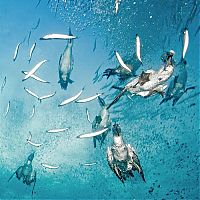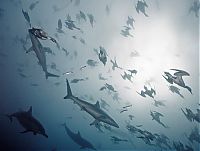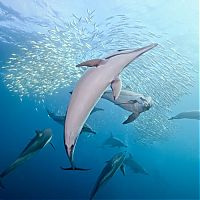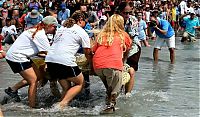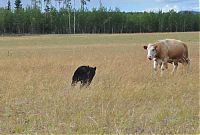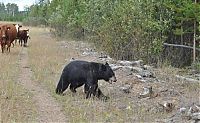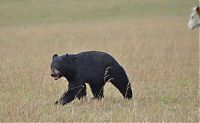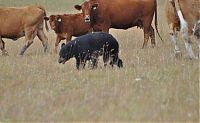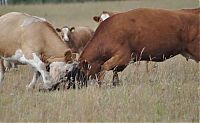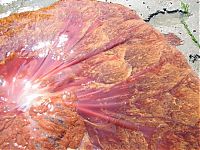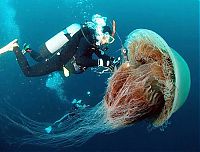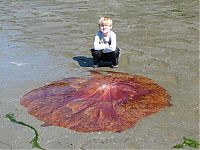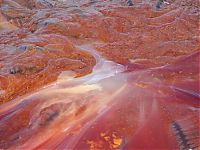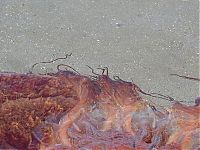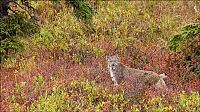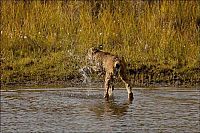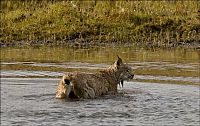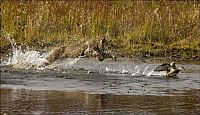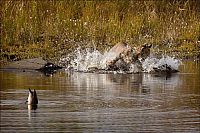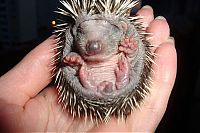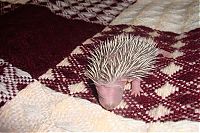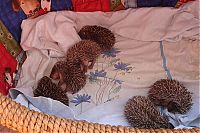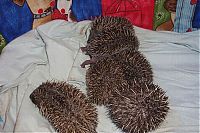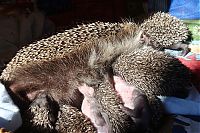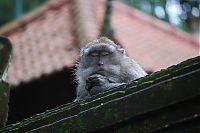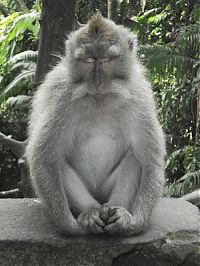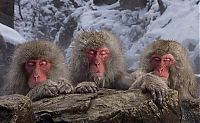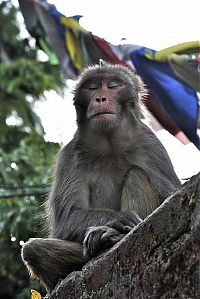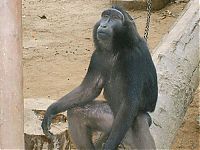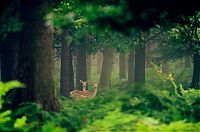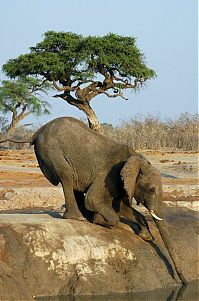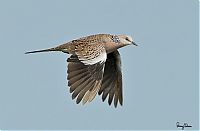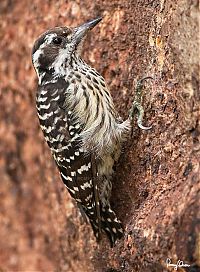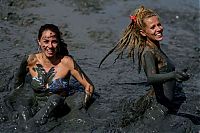Sardines Dance
Sunday, 14th August 2011, 09:10:19
Album: Fauna & Flora, New uploads: 8, Hits: 980, Size: 0MiB
Sardines, or pilchards, are several types of small, oily fish related to herrings, family Clupeidae. Sardines were named after the Mediterranean island of Sardinia, where they once lived in abundance.
The terms sardine and pilchard are not precise, and the usual meanings vary by region. Britain's Sea Fish Industry Authority, for example, classifies sardines as young pilchards. One criterion suggests fish shorter in length than 6 inches (15 cm) are sardines, and larger ones pilchards...
Saving A Turtle, Juno Beach, Jupiter, Florida
Sunday, 14th August 2011, 08:47:02
Album: Fauna & Flora, New uploads: 12, Hits: 1745, Size: 1MiB
The turtle was run over by a boat prop. This was in Jupiter town, Florida. They do great work at the sea turtle rescue facility in Juno Beach.
Jupiter, Florida
Jupiter is a town located in Palm Beach County, Florida. As of the 2000 census, the town had a total population of 39,328. The estimate population for 2009 is 50,606. As of 2006, the population had grown to 50,028, according to the University of Florida, Bureau of Economic and Business Research...
Cow Herd Battles A Bear
Sunday, 14th August 2011, 08:42:42
Album: Fauna & Flora, New uploads: 8, Hits: 975, Size: 0MiB
Herd refers to a social grouping of certain animals of the same species, either wild or domestic, and also to the form of collective animal behavior associated with this (referred to as herding) or as a verb, to herd, to its control by another species such as humans or dogs.
The term herd is generally applied to mammals, and most particularly to the grazing ungulates that classically display this behaviour...
Giant Jellyfish, Kayak Point, Washington, United States
Thursday, 4th August 2011, 08:06:52
Album: Fauna & Flora, New uploads: 13, Hits: 3433, Size: 1MiB
Jellyfish (also known as jellies or sea jellies or Medusozoa) are free-swimming members of the phylum Cnidaria. Jellyfish have several different morphologies that represent several different cnidarian classes including the Scyphozoa (over 200 species), Staurozoa (about 50 species), Cubozoa (about 20 species), and Hydrozoa (about 1000–1500 species that make jellyfish and many more that do not)...
Wild Lynx Hunting For Duck
Monday, 1st August 2011, 08:35:45
Album: Fauna & Flora, New uploads: 9, Hits: 2099, Size: 1MiB
A lynx (/ˈlɪŋks/; plural lynx or lynxes) is any of the four Lynx genus species of medium-sized wildcats. The name "lynx" originated in Middle English via Latin from Greek word "λύγξ", derived from the Indo-European root "leuk-", meaning "light, brightness", in reference to the luminescence of its reflective eyes. There is considerable confusion about the best way to classify felids at present, and some authorities classify them as part of the genus Felis...
Baby Hedgehogs
Friday, 29th July 2011, 10:52:39
Album: Fauna & Flora, New uploads: 10, Hits: 2196, Size: 1MiB
A hedgehog is any of the spiny mammals of the subfamily Erinaceinae and the order Erinaceomorpha. There are 17 species of hedgehog in five genera, found through parts of Europe, Asia, Africa, and New Zealand. There are no hedgehogs native to Australia, and no living species native to North America; those in New Zealand are introduced. Hedgehogs have changed little over the last 15 million years. Like many of the first mammals they have adapted to a nocturnal, insectivorous way of life...
Dog Shaking With His Head
Friday, 29th July 2011, 09:59:59
Album: Fauna & Flora, New uploads: 11, Hits: 1749, Size: 1MiB
It seems that science is at last trying to catch up with how the domestic dog performs many tasks. The latest research into the dogs method of shaking water from their coats shows that as they have evolved to do so with the highest efficiency possible.
The core reason behind this vital action is to remove excess water from their coats so they do not get hypothermia...
Meditating Monkeys
Friday, 29th July 2011, 09:48:59
Album: Fauna & Flora, New uploads: 22, Hits: 3680, Size: 1MiB
A monkey is any cercopithecoid (Old World monkey) or platyrrhine (New World monkey) primate. All primates that are not prosimians or apes are monkeys. The 264 known extant monkey species represent two of the three groupings of simian primates (the third group being the 22 species of apes). Monkeys are generally considered to be intelligent and, unlike apes, monkeys usually have tails...
Animal Photography
Wednesday, 27th July 2011, 10:14:07
Album: Fauna & Flora, New uploads: 7, Hits: 947, Size: 0MiB
Animals are a major group of multicellular, eukaryotic organisms of the kingdom Animalia or Metazoa. Their body plan eventually becomes fixed as they develop, although some undergo a process of metamorphosis later on in their life. Most animals are motile, meaning they can move spontaneously and independently. All animals are also heterotrophs, meaning they must ingest other organisms for sustenance...
| History | 1 | - | 7 | 8 | 9 | 10 |
|
|
||||||||||||||

